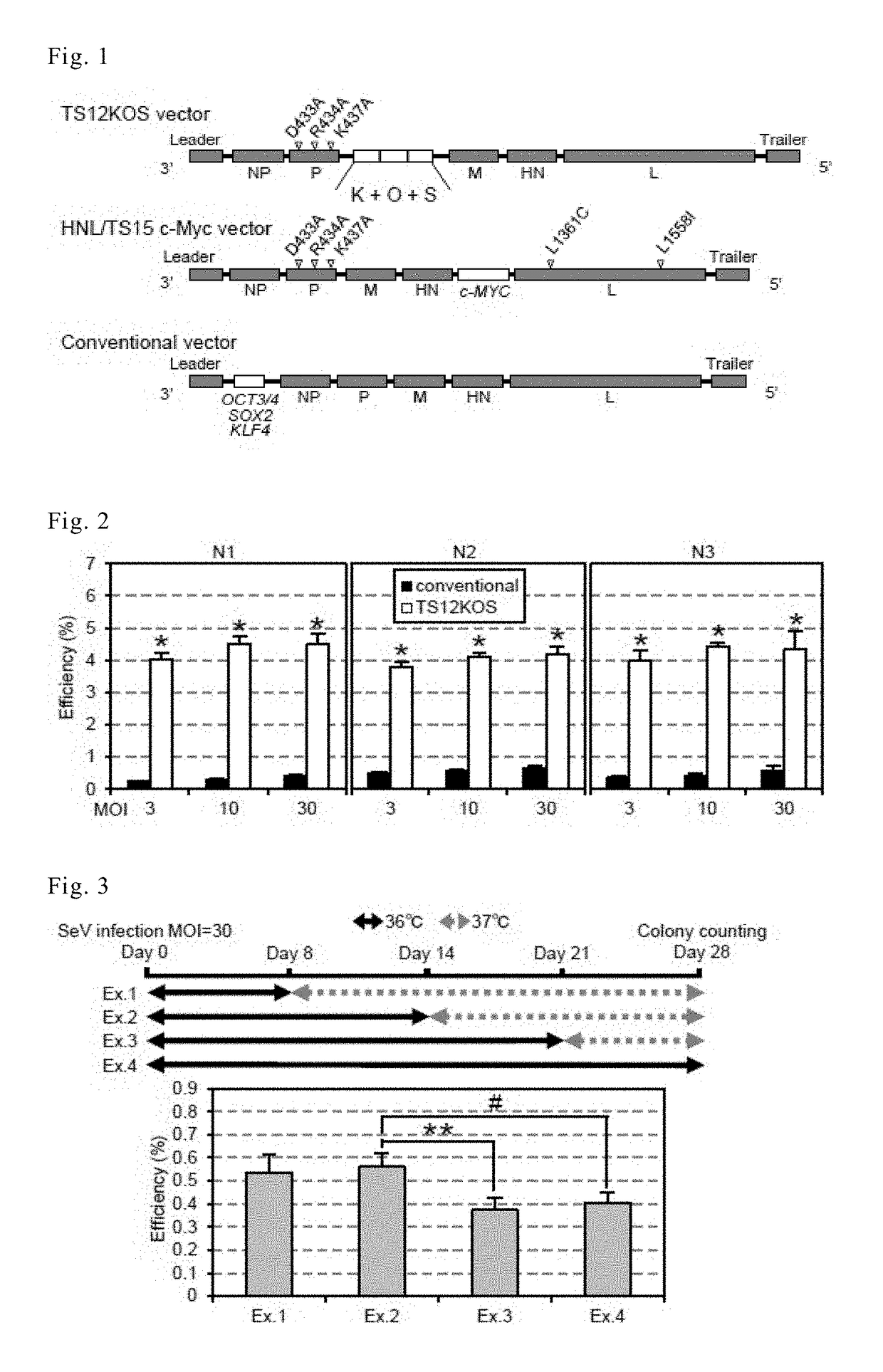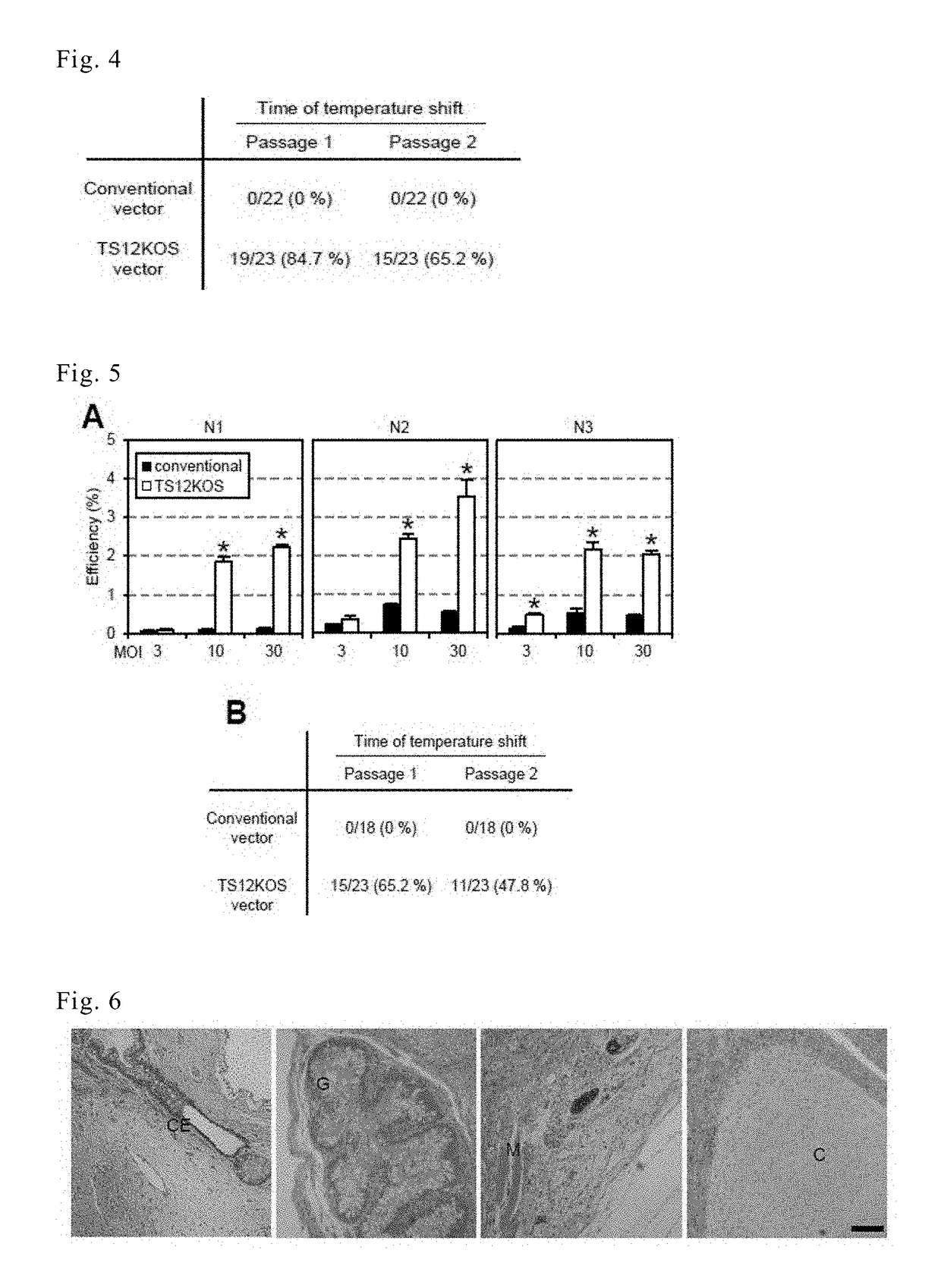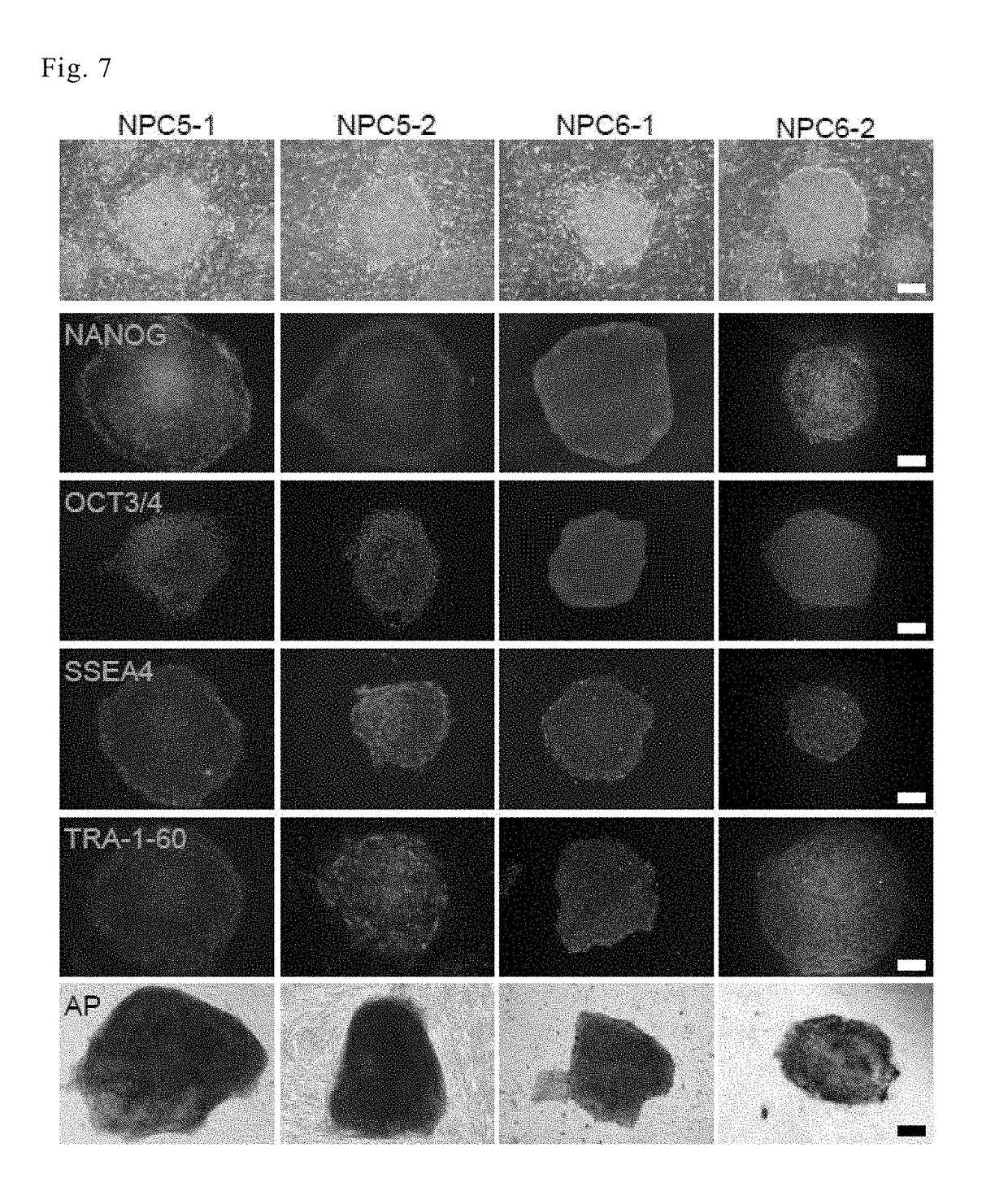Drug for the treatment of cholesterol accumulation disorders, and screening method for same
a cholesterol accumulation and drug technology, applied in the direction of drug compositions, metabolic disorders, instruments, etc., can solve the problems of ungeneralized hpbcd, unfavorable drug safety, and unsatisfactory symptoms of nervousness, and achieve the effect of easy screening
- Summary
- Abstract
- Description
- Claims
- Application Information
AI Technical Summary
Benefits of technology
Problems solved by technology
Method used
Image
Examples
example 1
neration
[0144]By using temperature-sensitive Sendai virus (SeV) vectors, iPS cells containing the sequences for four reprogramming factors (OCT3 / 4, SOX2, KLF4and c-MYC) were generated.
[0145]To increase the efficiency of iPS cell generation and reduce the length of time the vector remains inside the cells, the inventors generated a new Ts-SeVvector, TS12KOS, carrying coding sequences for three of the above factors, KLF4(K), OCT3 / 4(O), and SOX2(S) tandemly linked in the KOS direction (FIG. 1). The TS12KOS vector contains three mutations that produce alanine residues (D433A, R434A, and K437A) in the large protein(L)-binding domain of the phosphoprotein, a component of SeV RNA polymerase. SeV carrying these three mutations showed moderate expression of GFP at 37° C., but weak expression at temperatures above 38° C.
example 2
Generation with SeV Vector
[0146]Fibroblasts from healthy volunteers and patients were generated and isolated from explants of skin biopsy following informed consent under protocols approved by the ethics committee assigning inventors. Skin samples were minced and cultured in Dulbecco's modified essential medium (DMEM, Life technologies) supplemented with 10% Fetal Bovine Serum (FBS). After the fibroblast appeared, it was expanded for iPS cell induction.
[0147]To generate iPS cells from peripheral blood cells, mononuclear cells (MNCs) were isolated by Ficall gradient. To stimulate T lymphocytes, MNCs were cultured on anti-CD3 antibody-coated dishes with IL-2 for five days.
[0148]iPS cells were generated from human skin-derived fibroblasts and stimulated T lymphocytes as described in the report by Seki (2010, non-patent document 3). Briefly, 1×105 of human MNCs per well of 48-well plate and 5×105 cells of human fibroblast cells per well of 6-well plate were seeded one day before infecti...
example 3
of Established iPS Cells
[0151]Nested RT-PCR analysis of viral RNA was conducted to determine whether the TS12KOS vector was eliminated from the iPS cells earlier than the conventional SeV vector. The individual colonies were expanded and the temperature was shifted from 37 ° C. to 38° C. for 3 days at various passages. In conventional SeV infection, temperature upshifts at passage 1 or 2 induced no virus removal. In contrast, in the case of the TS12KOS vector, when the temperature was upshifted at passage 1 and 2, 84% and 65%, respectively, of iPS cell-like clones were negative for the viral genome (FIG. 4). These results indicate that the TS12KOS vector was superior to the conventional SeV vector in terms of both the efficiency of iPS cell generation and the removal of virus from iPS cells.
PUM
| Property | Measurement | Unit |
|---|---|---|
| Temperature | aaaaa | aaaaa |
| Temperature | aaaaa | aaaaa |
Abstract
Description
Claims
Application Information
 Login to View More
Login to View More - R&D
- Intellectual Property
- Life Sciences
- Materials
- Tech Scout
- Unparalleled Data Quality
- Higher Quality Content
- 60% Fewer Hallucinations
Browse by: Latest US Patents, China's latest patents, Technical Efficacy Thesaurus, Application Domain, Technology Topic, Popular Technical Reports.
© 2025 PatSnap. All rights reserved.Legal|Privacy policy|Modern Slavery Act Transparency Statement|Sitemap|About US| Contact US: help@patsnap.com



